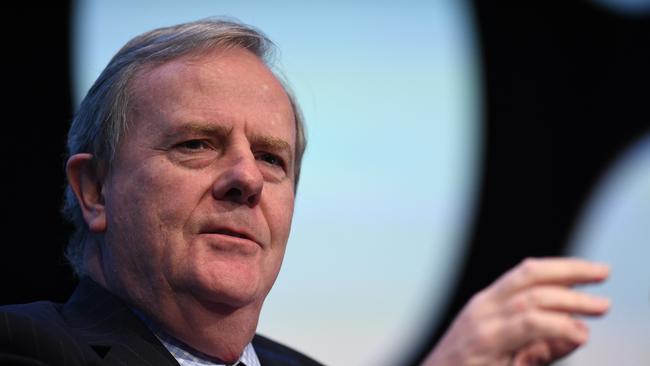The Future Fund is our greatest national financial asset, and it must be protected at all costs
The $212bn Future Fund is Australia’s greatest national financial asset and it must be protected at all costs.

Business
Don't miss out on the headlines from Business. Followed categories will be added to My News.
The $212bn Future Fund – an even greater $272bn when the other public monies it manages are included – is Australia’s greatest national financial asset that the people really do own.
By any measure it has been an outstanding success.
It was kicked off in 2006 with a once and only contribution of $60.5bn – from the sale of the final bit of Telstra and then-treasurer Peter Costello’s budget surpluses; the last surpluses we would see until the 2022-23 entirely China-driven one.
In the most graphic illustration of the power of compound interest, it’s been grown from that
$60.5bn to $212bn, in just over a decade-and-a-half, by earning an average of 8.2 per cent a year.
If that earning rate continued – and it is entirely realistic to suggest it could – the Fund would
increase to over $800bn by 2040.
Add on the other monies, and the total would go above $1 trillion.
Two very different things are, in my opinion, absolutely critical.
The first and most obvious is that the two parties of government – incumbent Labor and the Coalition alternative – provide an absolute commitment to keep their grubby political fingers off the Fund and its money.
It would be particularly stupid to suggest using the Fund to pay off – only some of – the $550bn net federal government debt.
Just do the math, as so many politicians (on both sides) are so incapable or unwilling to do.
The Fund earns 8 per cent a year; the debt costs around 4 per cent in interest a year. Using the Fund to pay off the debt would unnecessarily cost us $8bn-plus a year.
Indeed, we should have done the exact opposite, as I suggested some years ago, before we started running all those huge Covid-panic deficits.
That was to actually borrow money at the then well less than 4 per cent interest rates on long-
term government debt, and give it to the Future Fund to invest.
If we’d borrowed just even $200bn, we could have been earning $10bn-plus net, free and clear, into virtual perpetuity.
So at the very least, no-one in their right mind should be thinking of reducing the Fund. Even for the better of two bad alternatives: paying off some of the debt.
Far less, the utterly, quite criminally, fiscally irresponsible idea of using the money for short-term ‘good purposes’ spending.
The way to pay off the debt – or at least, to stop it increasing – is to run sustained budget surpluses; or at least keep the budget broadly in balance.
The second big thing, which I have also been banging on for some years now, is to open up the expertise and success of the Fund to all Australians directly.
You would do this by setting up a separate fund, to essentially mirror the Future Fund, into which all Australians could either invest directly or with their super.
More immediately is the question of Costello’s own future, as retiring chairman of the Fund.
It is entirely appropriate for the current government to appoint his successor; but that successor must be someone fully invested in the Fund’s continuing future.
Originally published as The Future Fund is our greatest national financial asset, and it must be protected at all costs


